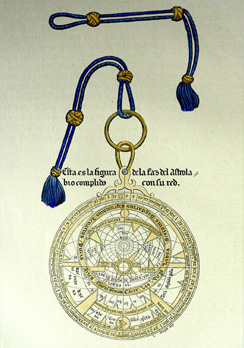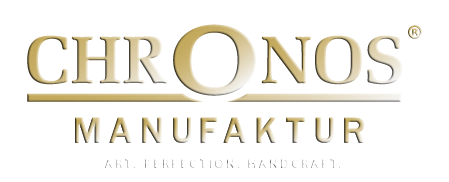
Picture from the "Libros del Saber de Astronomia" (1277) by Alfonso X of Castile
(Edited by Rico y Sinobas, 1863)
History
The instrument called the astrolabium planisphaerium has been known since Late Antiquity. It enables the user to make astronomical and astrological calculations and observations, and can also be used for demonstration purposes.
The astro-mathematical foundations for the instrument were laid by Greek scholars before the time of Christ (Apollonius, c. 200 B.C. and Hipparchus, c. 150 B.C.). The oldest surviving texts on the astrolabe were written by Philoponos (c. 550 A.D.) and Severus Sebokth (c. 600 A.D., written in Syrian). Possibly the instrument was known to the most famous astronomer of Antiquity, Claudius Ptolemy (c. 150 A.D.), but we cannot be certain.
The earliest known devices date from the 10th century. They were made in Persia. The earliest surviving western European astrolabes can only be dated back to the 13th/14th century. Astrolabes continued to be used long after the Copernican revolution and well into the 18th century. In the Arab culture it remained in use for another hundred years.

